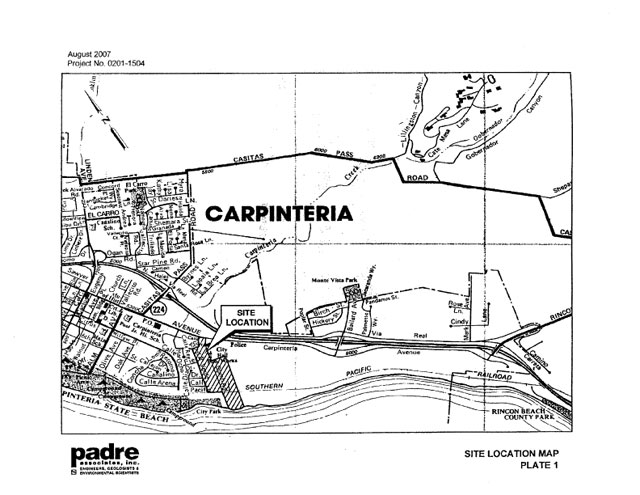Channelkeeper’s Bird-Dogging Nears Payoff
Activists Praise Cleanup Plan for Contaminated Soil
Through years of negotiations and revisions, Santa Barbara Channelkeeper has put much effort into convincing the Central Coast Regional Water Board to apply stricter standards for removing soil contaminated with heavy metals and DDT from Venoco’s oil and gas processing facility, located at Dump Road and Carpinteria Avenue.
Finally, on September 7, the Carpinteria Planning Commission presented an updated clean-up plan. It described how the “responsible parties” (Venoco and Chevron) were to redistribute contaminated soil to a dump site to be safely stored.
It still wasn’t good enough for Channelkeeper. Along with a variety of concerned Carpinteria residents, the organization presented revisions to correct what they characterized as numerous oversights. Channelkeeper promptly issued a statement saying, “The plan, which was the result of more than five years of negotiation and compromise between Regional Water Board staff, Venoco Inc., and Chevron Environmental Management Company, dubiously proposed to remove only the most highly toxic hot spots, leaving substantial volumes of contaminated soil on-site.”
Channelkeeper made it abundantly clear to the water board that even toxins detected in smaller concentrations throughout the soil were a big threat. And with area residents up in arms about the minimal clean-up effort, Venoco and Chevron are not in a position to get away with clearing only the larger pockets of contaminants on site, said Kira Redmond, director of Channelkeeper.

The organization’s involvement in this project arose from concern for residential areas near the site, as well as effects the toxins could have on surrounding natural systems and the harbor seal rookery. Redmond said residents have become very well informed on the persistent and long-term effects of DDT and its breakdown components (collectively known as DDX) on the environment, and the adverse effects trace metals can have on the cognitive abilities of various organisms.
Interestingly, the presence of DDT on the clean-up site can mainly be linked to the rich agricultural history of Carpinteria, and its use of numerous pesticides region wide. However, the heavy metals found on the site are directly the result of the use and cleaning of metal equipment in the sand-blast area of Venoco’s oil and gas processing facility.
“Santa Barbara Channelkeeper has been bird-dogging the development of this clean-up plan for four years,” Redmond said, “because we want to make sure that the citizens of Carpinteria get the strongest clean-up possible, one that prioritizes the protection of their health and the environment, and not the pocketbooks of Venoco and Chevron.”
“Were it not for Channelkeeper’s painstaking scrutiny of the lengthy negotiation between Venoco, Chevron and the Regional Water Board over the level of clean-up required,” Redmond said, “and our staunch advocacy before the Regional Water Board and the City of Carpinteria, we would not have a clean-up plan in place that is the most stringent than at any DDT-waste impacted site in the entire United States.”
The revisions are to be discussed and decided upon at the Carpinteria Planning Commission’s October 4 meeting. Redmond said she hopes and trusts the commission will consider all of Channelkeeper’s recommendations for a stronger and more comprehensive clean-up strategy. “We’re thrilled to have been able to help the Carpinteria community and environment get the clean-up they deserve,” Redmond concluded.


